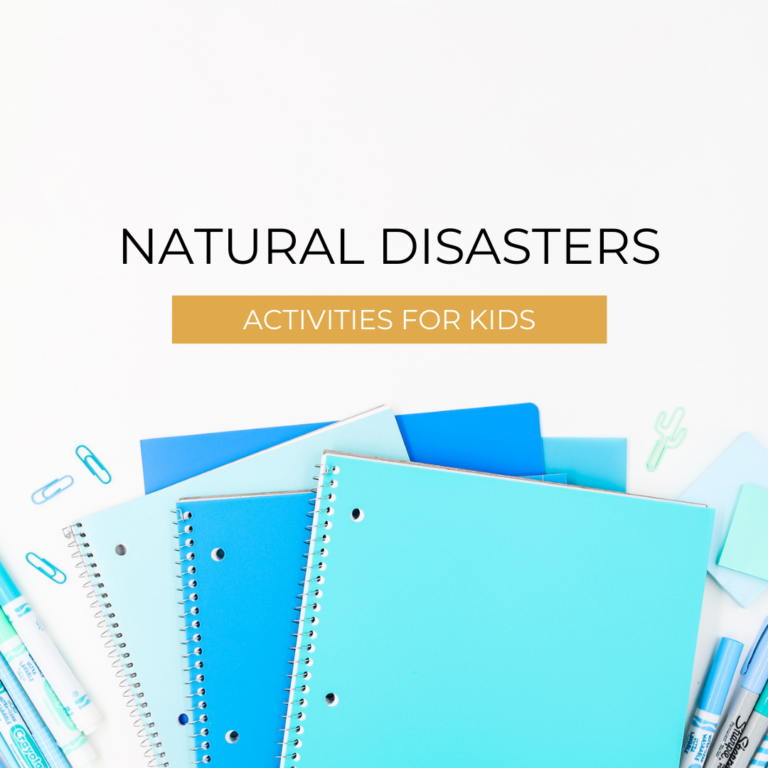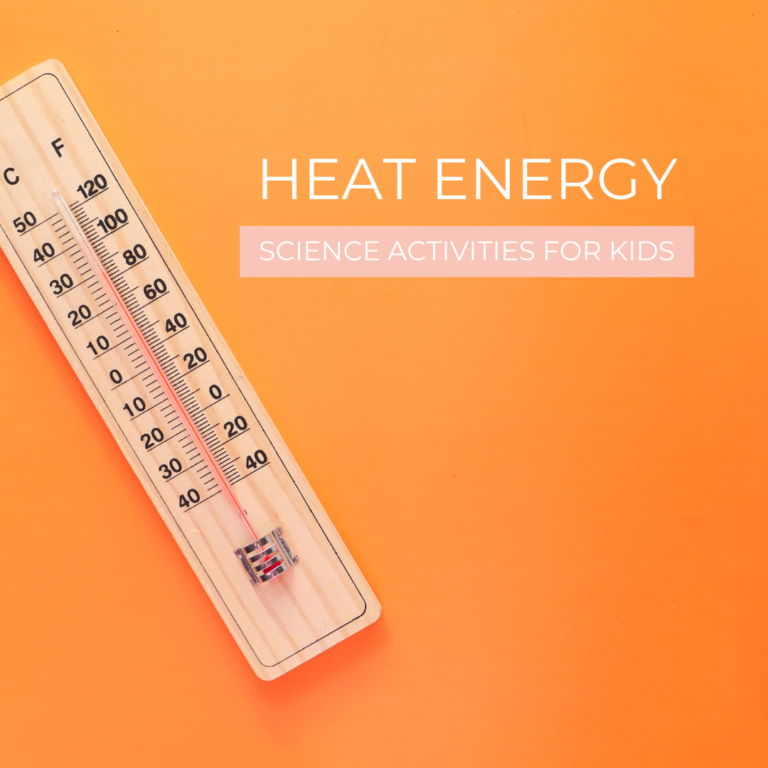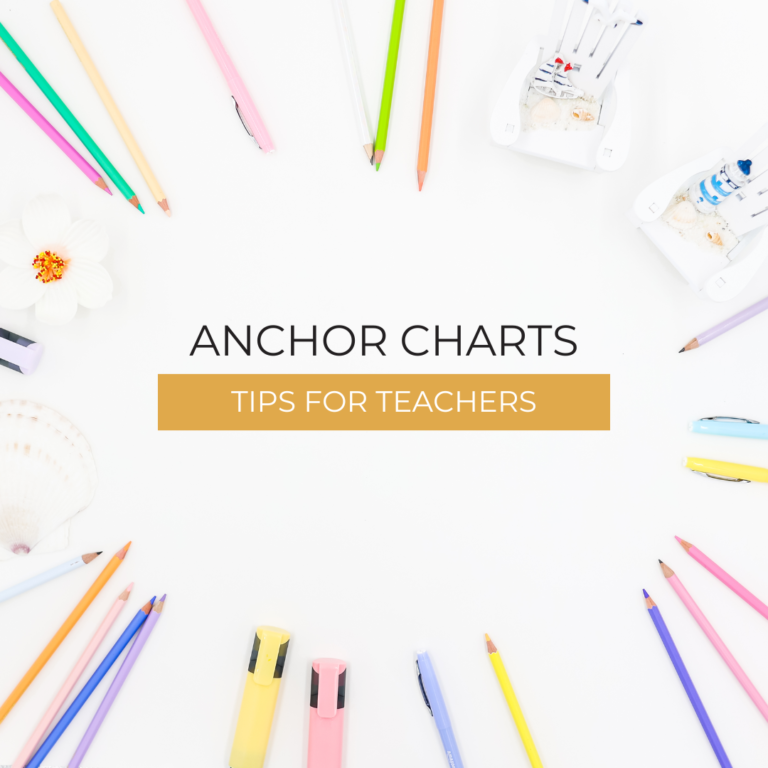Tips for Teaching Living vs. Nonliving Things

Teaching living vs. nonliving things is a fun science lesson my students love to learn about every year. BUT, sometimes I get bored teaching the same lessons over and over again. I was in need of some new activities the kids and I would enjoy doing this year.
Living Vs. Nonliving Activities
The low-prep Living Vs. Nonliving activities in this post are from my Living and Nonliving Activities and Worksheets unit and my Digital Living and Nonliving pack.
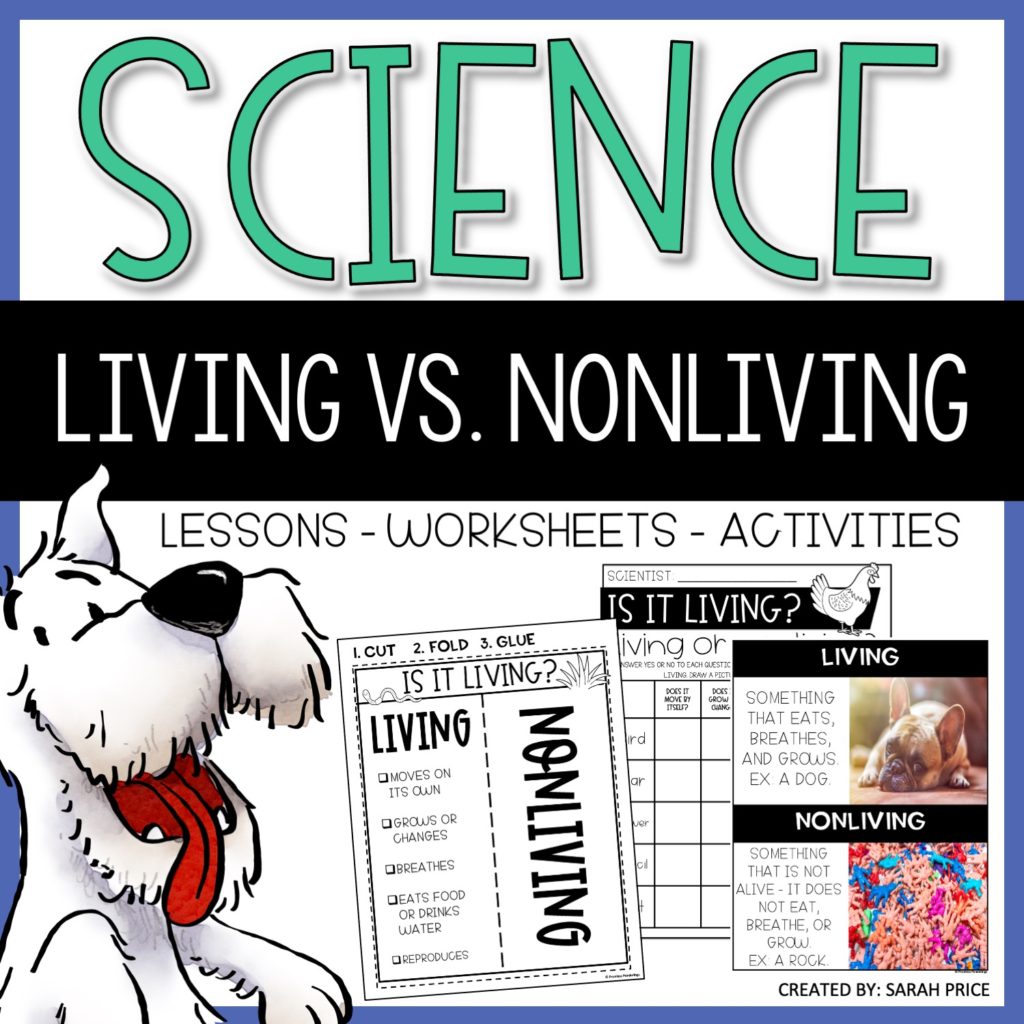
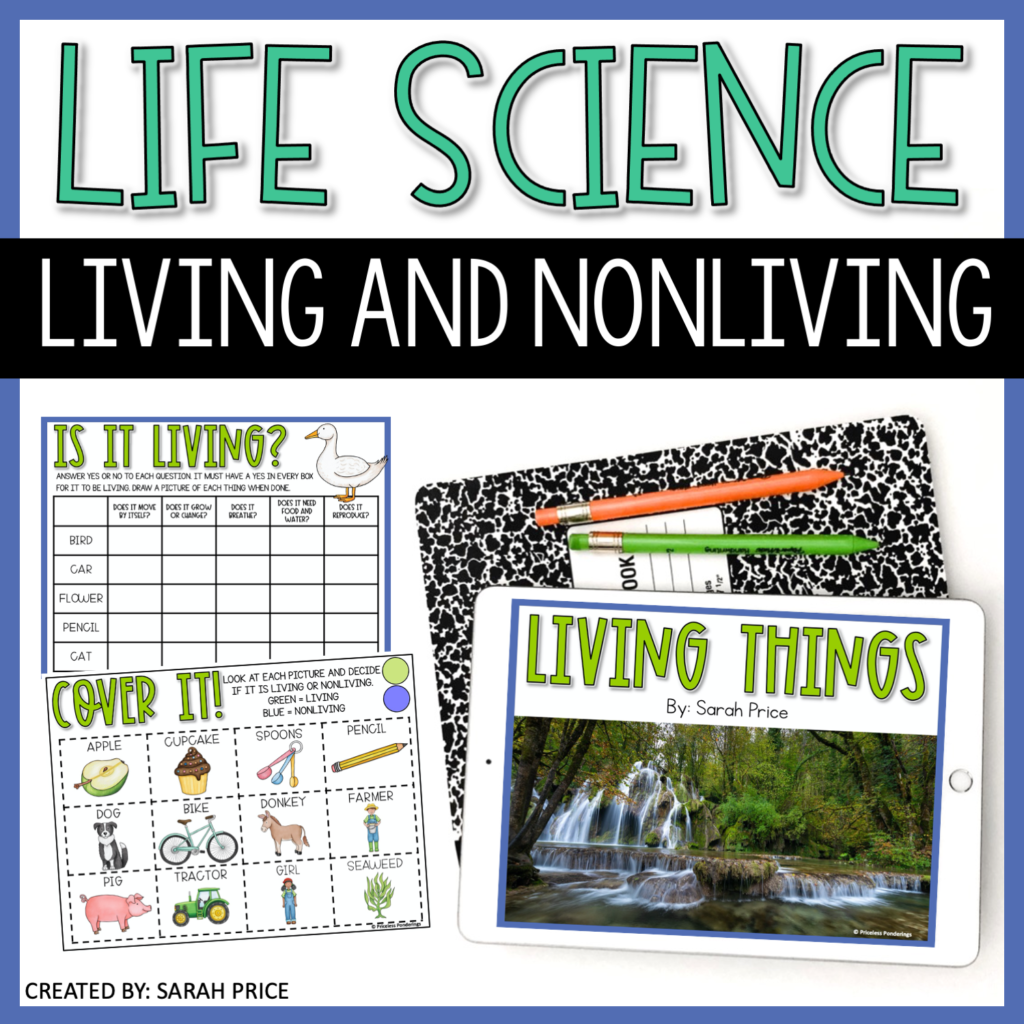
How To Introduce Living and Nonliving Things
I wanted to start our unit on teaching living vs. nonliving things by showing my class a PowerPoint slide. I love having the kids practice note-taking when we are starting a new topic. Not all classes do an interactive notebook, but it makes an easy way to keep track of notes and what we are learning. If you don’t have interactive notebooks in your class, science folders and note-taking pages work just as well.
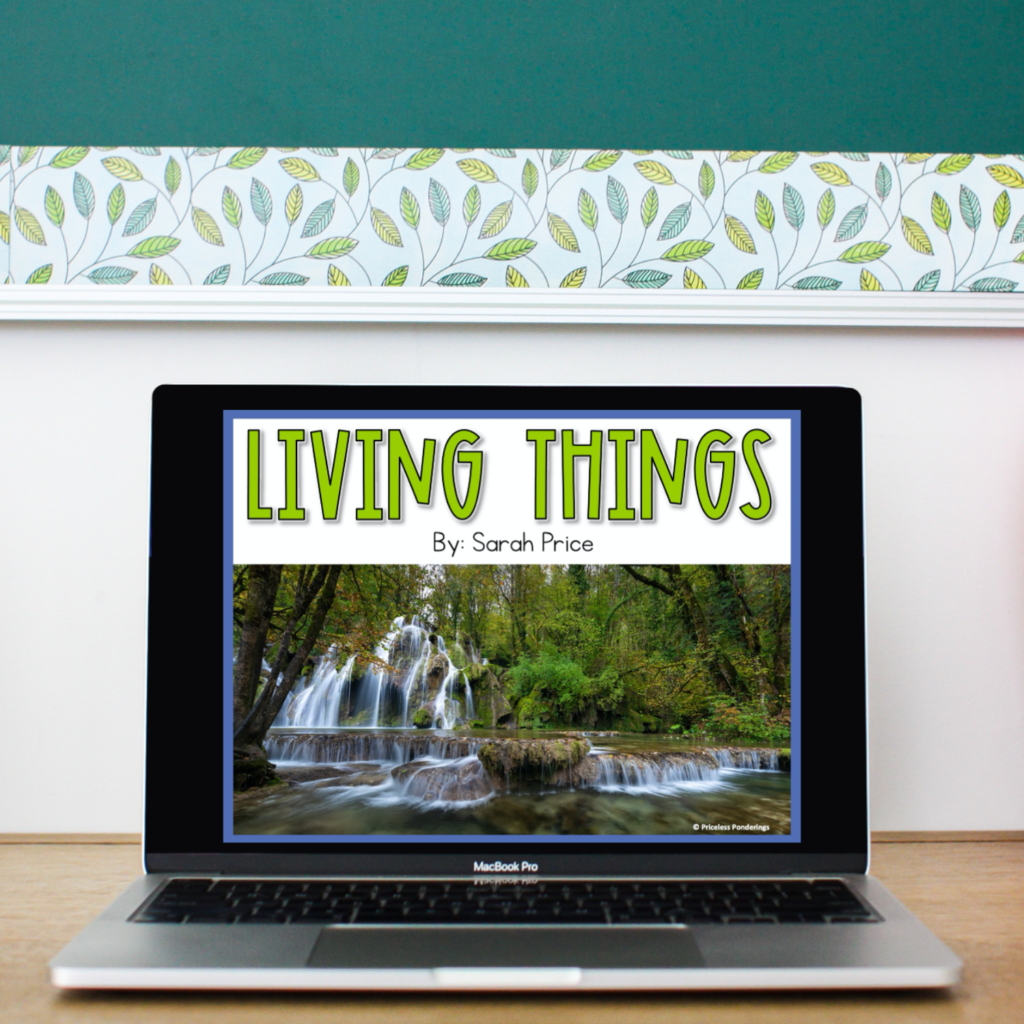
A bonus with using PowerPoint slides in class is that you can send them home to your students’ parents to help them reinforce the new topic they are learning in school. You can also assign homework activities to go along with the slides for additional practice.
Sort Living vs. Nonliving Things Activities
Once my students knew the difference between living and nonliving things, I had them practice sorting living and nonliving things into different categories. One activity I came up with was a cut and sort foldable that has a simple checklist for students to use to help them correctly sort the pictures.
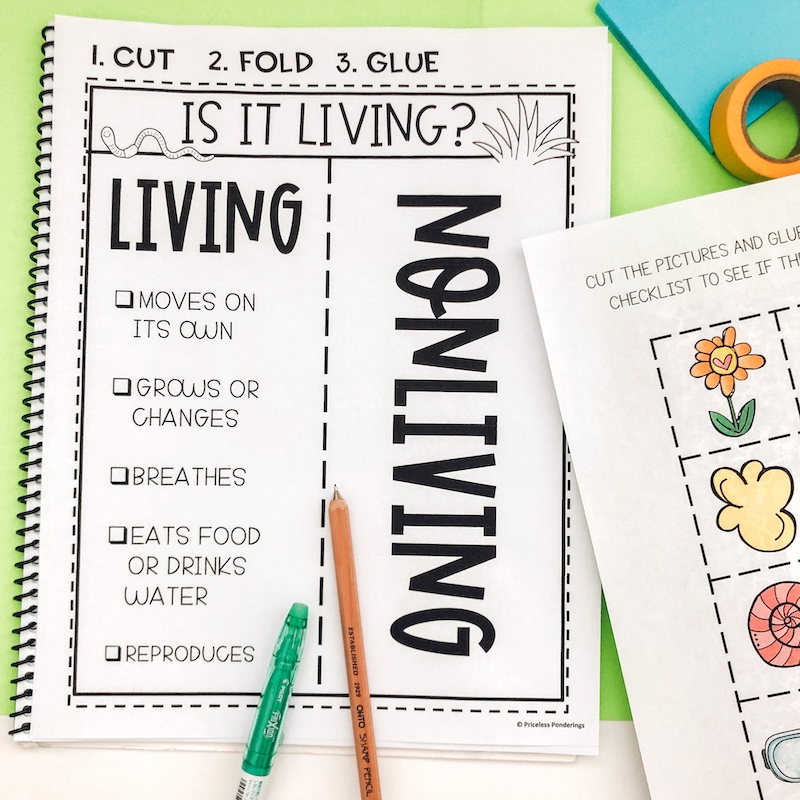
When teaching living and nonliving things to kids I first teach them the 5 things something must have in order to be considered living. The list includes; moves on its own, grows or changes, breathes, eats food or drinks water, and reproduces. This foldable makes a great checklist for students to use throughout the week to help them determine what is living and what isn’t.
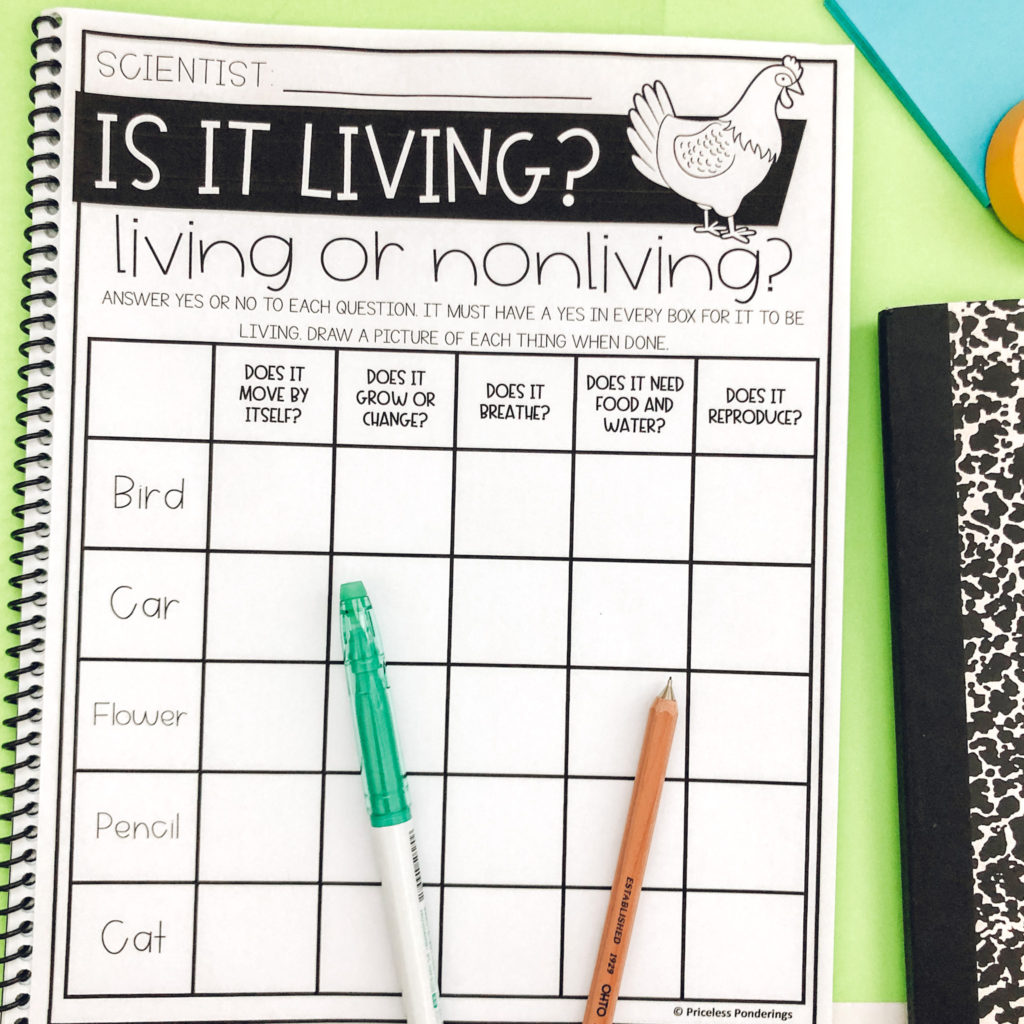
Another version of a fun sorting activity is a checklist worksheet. I like using this one as additional practice. There is a blank version that students can create their own list and have a classmate fill in their answers. It is a fun way to add some engagement and partner work into your science class.
Show Videos: Living and Nonliving
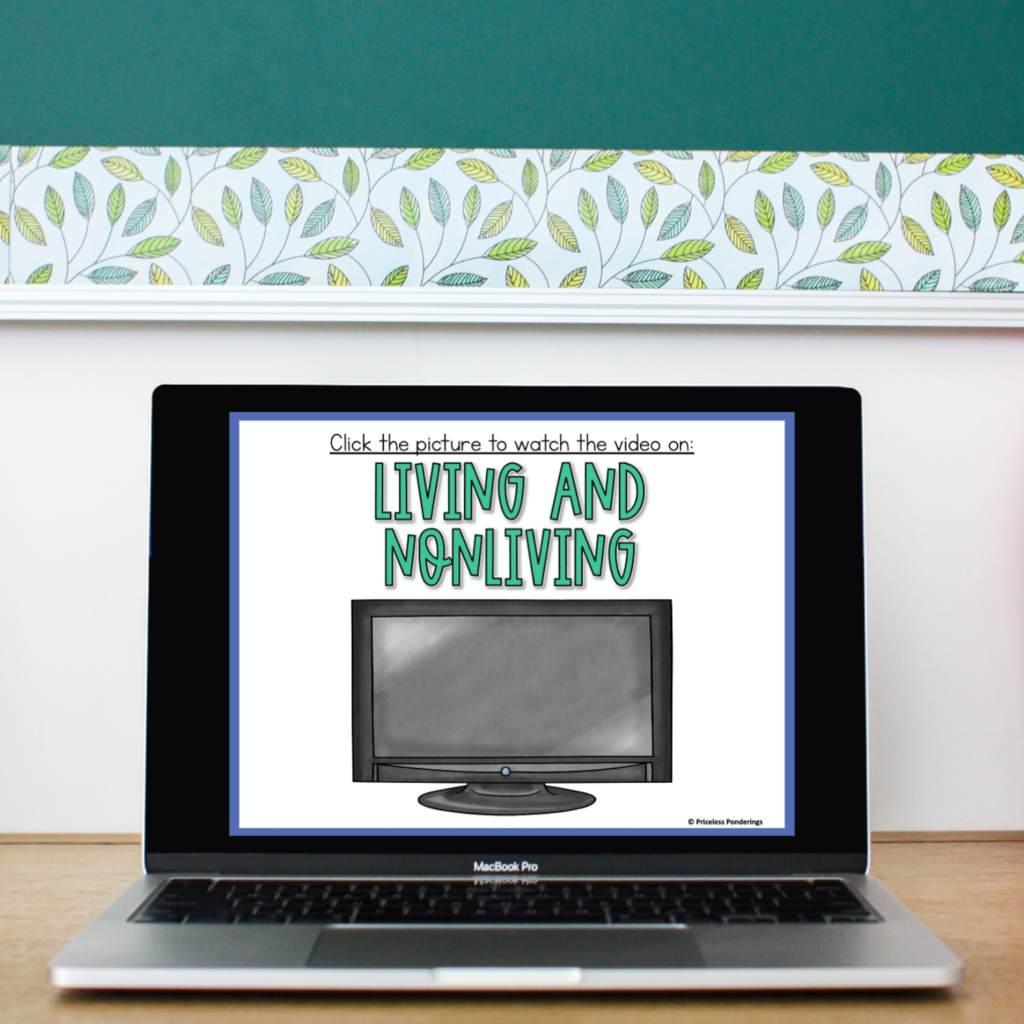
Play videos for students to see real-life pictures or learn more facts about living and nonliving things. Have students share what they have learned at the end by drawing pictures or writing facts that they took while they watched the videos.
Here are two videos that I like to use in my class. One of them is a catchy song, so be prepared to hear your kids sing it over and over again.
https://www.youtube.com/watch?v=Gy60BqCnTG4
https://safeshare.tv/x/ss5976142951b20
Teaching Living vs. Nonliving Things: Mini-Project
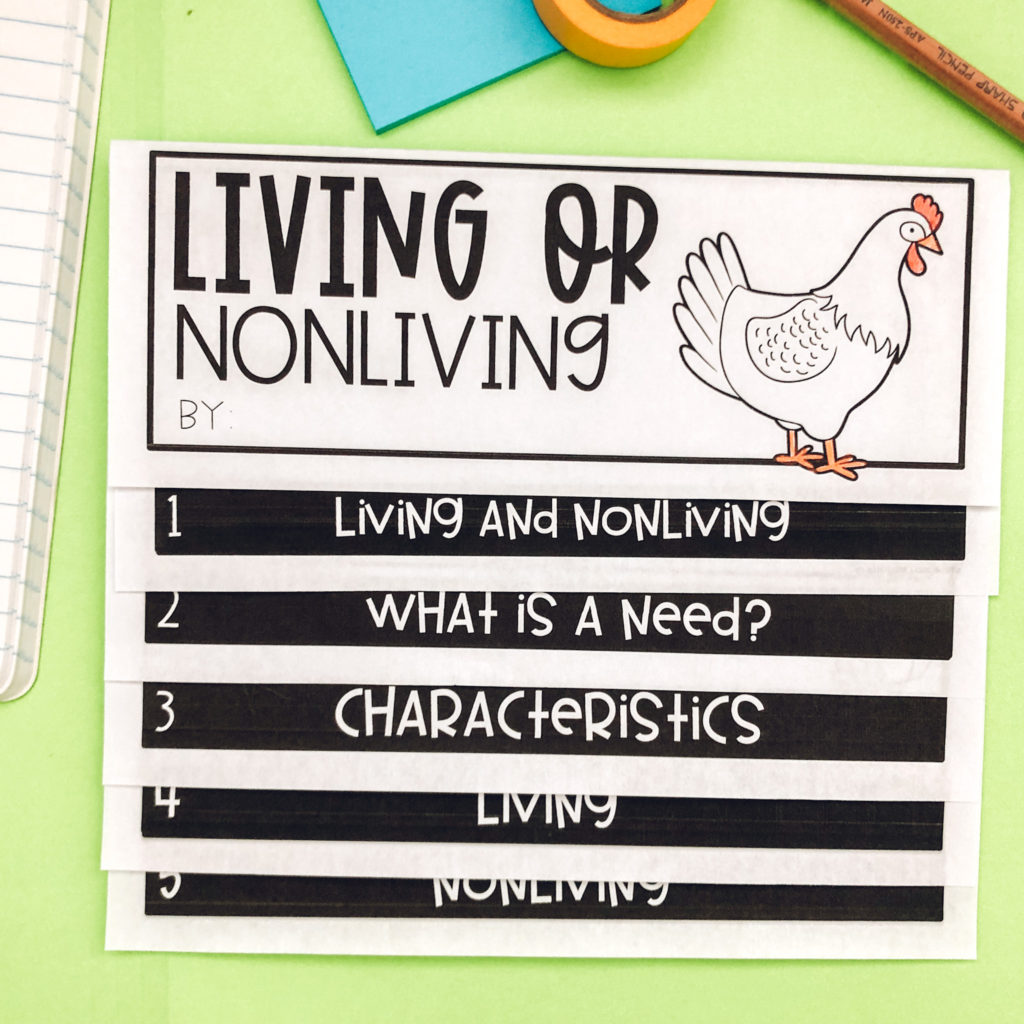
To end our unit on teaching living vs. nonliving things, I have my class either complete a flipbook or assign a writing prompt to see what they have learned. My class loves using flipbooks because they get to work on them in the morning when they come to school or when they finish other classwork. Parents also love getting them at the end of a unit because it does a great job at showing everything they have learned.
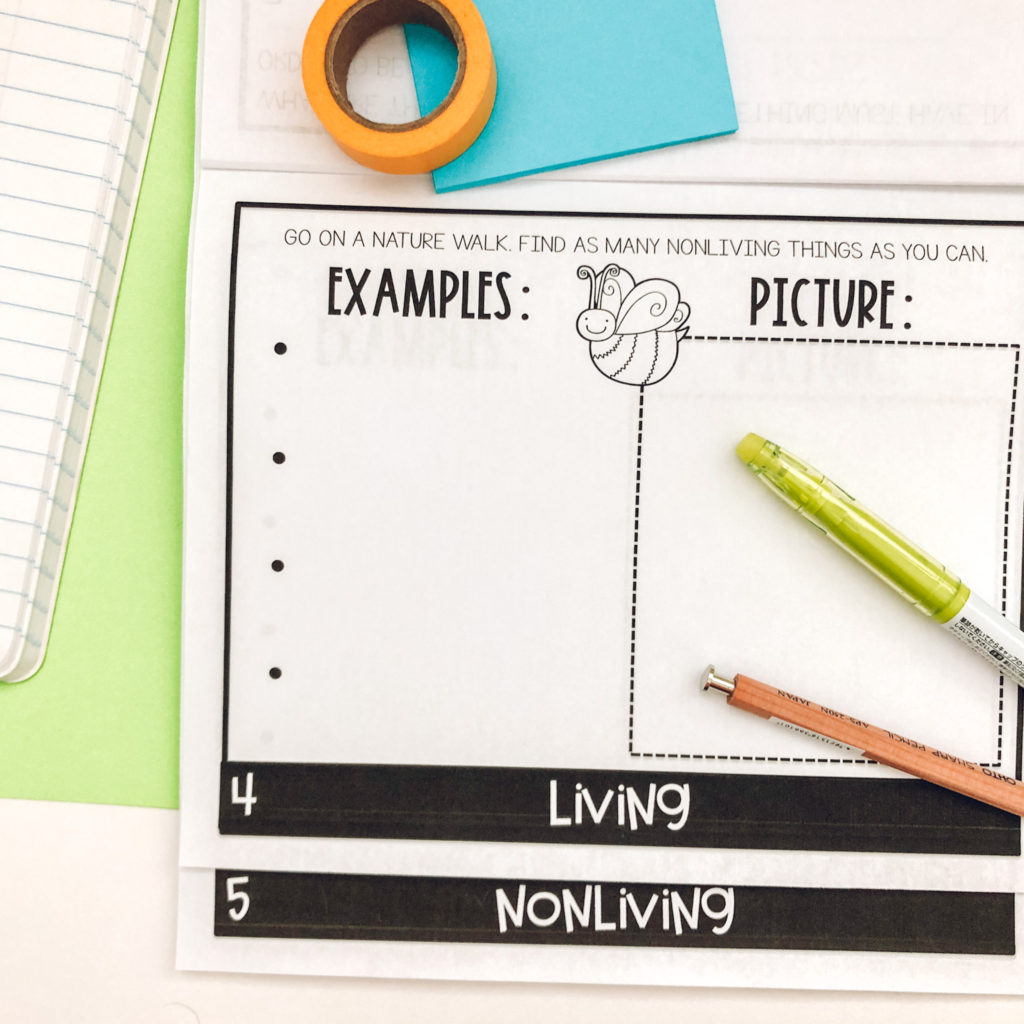
FREE Science Pacing Guide

More Living and Nonliving Resources
Check out these Living and Nonliving Units:
Hopefully, this post has inspired you with some ideas on teaching living vs. nonliving things! Make sure you save this pin so that you can come back to these ideas later.
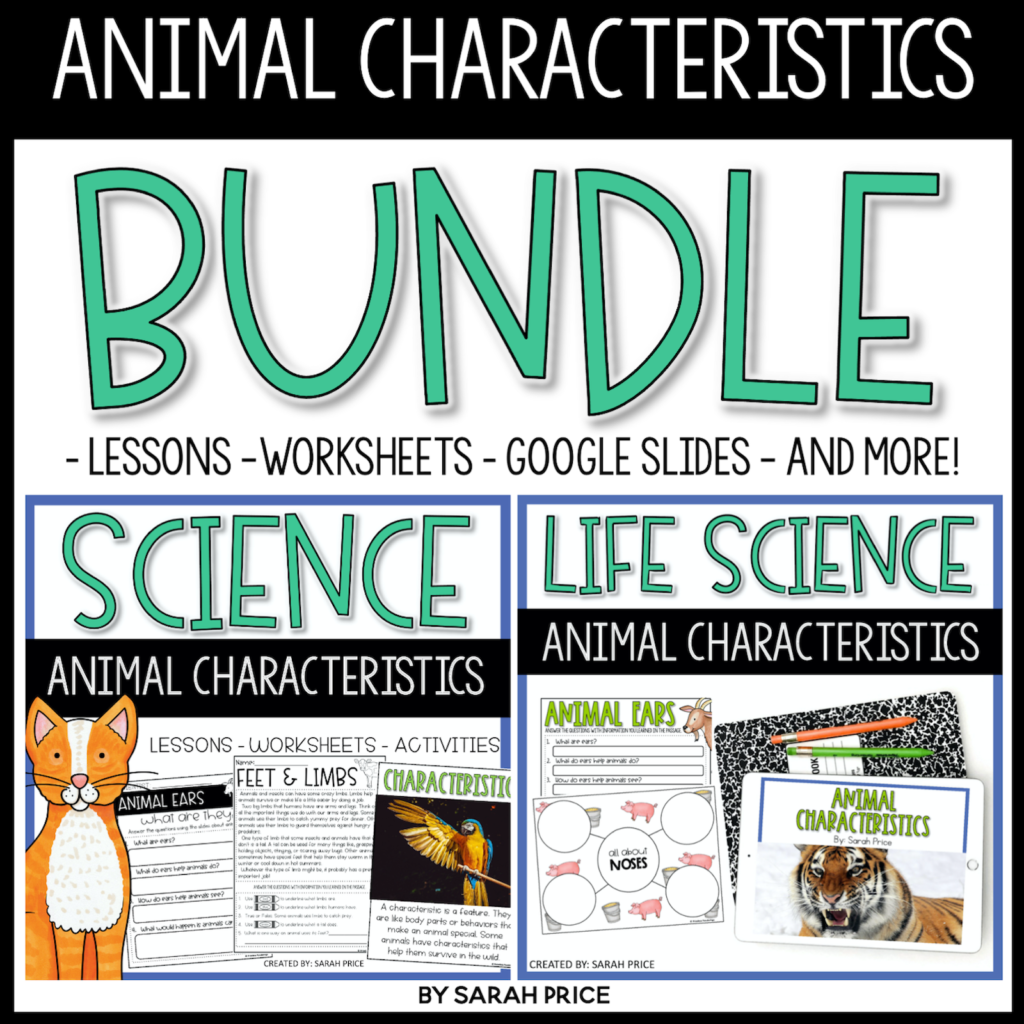
For more second grade geography activities, visit these posts:
LOW-PREP HABITAT ACTIVITIES FOR ELEMENTARY SCIENCE
WHAT TO TEACH AT THE BEGINNING OF THE YEAR SCIENCE ACTIVITIES
GUIDE TO EASY WATER CYCLE ACTIVITIES FOR LESSON PLANNING
Happy Teaching!
Sarah



